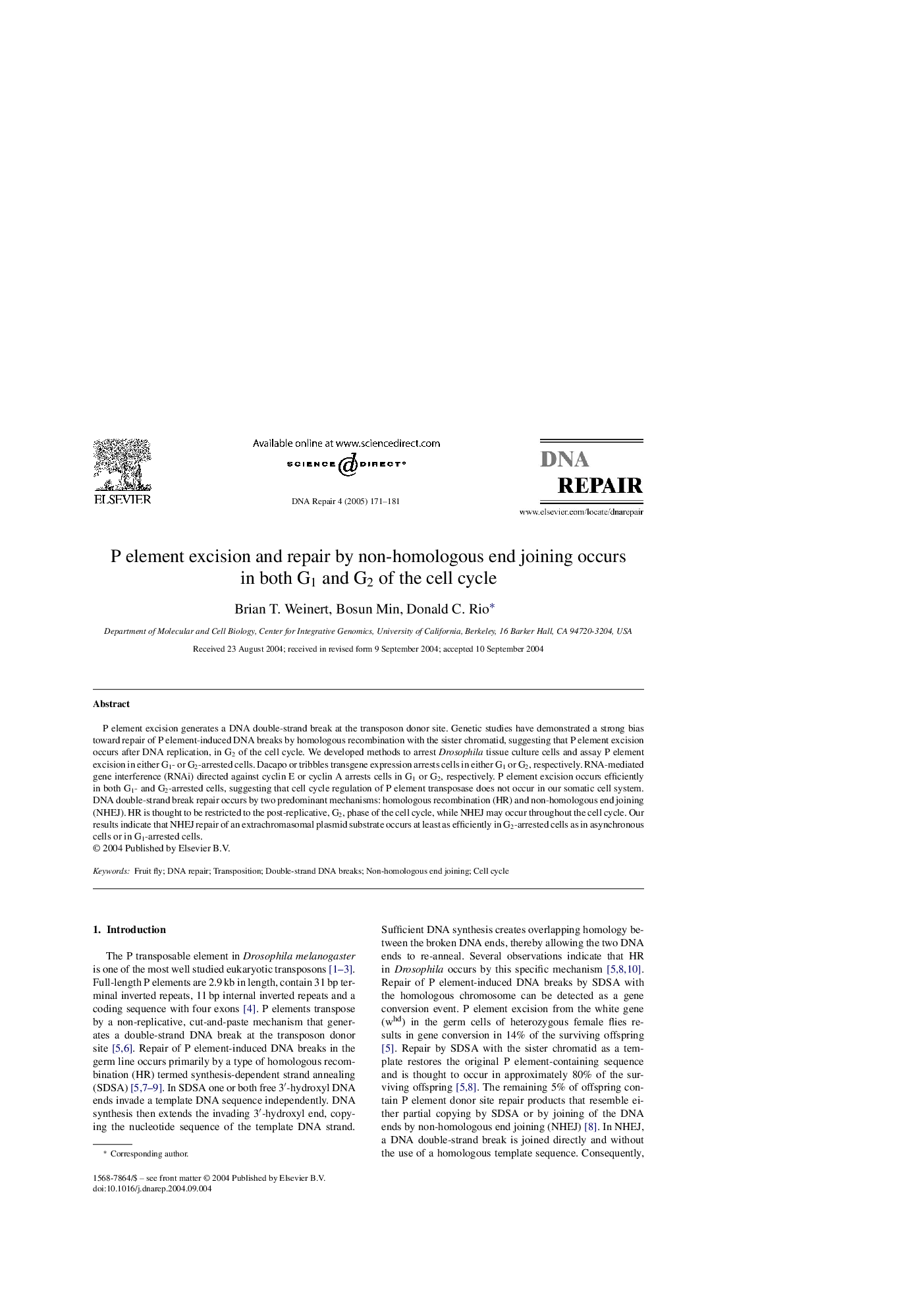| کد مقاله | کد نشریه | سال انتشار | مقاله انگلیسی | نسخه تمام متن |
|---|---|---|---|---|
| 10824044 | 1061965 | 2005 | 11 صفحه PDF | دانلود رایگان |
عنوان انگلیسی مقاله ISI
P element excision and repair by non-homologous end joining occurs in both G1 and G2 of the cell cycle
دانلود مقاله + سفارش ترجمه
دانلود مقاله ISI انگلیسی
رایگان برای ایرانیان
کلمات کلیدی
موضوعات مرتبط
علوم زیستی و بیوفناوری
بیوشیمی، ژنتیک و زیست شناسی مولکولی
زیست شیمی
پیش نمایش صفحه اول مقاله

چکیده انگلیسی
P element excision generates a DNA double-strand break at the transposon donor site. Genetic studies have demonstrated a strong bias toward repair of P element-induced DNA breaks by homologous recombination with the sister chromatid, suggesting that P element excision occurs after DNA replication, in G2 of the cell cycle. We developed methods to arrest Drosophila tissue culture cells and assay P element excision in either G1- or G2-arrested cells. Dacapo or tribbles transgene expression arrests cells in either G1 or G2, respectively. RNA-mediated gene interference (RNAi) directed against cyclin E or cyclin A arrests cells in G1 or G2, respectively. P element excision occurs efficiently in both G1- and G2-arrested cells, suggesting that cell cycle regulation of P element transposase does not occur in our somatic cell system. DNA double-strand break repair occurs by two predominant mechanisms: homologous recombination (HR) and non-homologous end joining (NHEJ). HR is thought to be restricted to the post-replicative, G2, phase of the cell cycle, while NHEJ may occur throughout the cell cycle. Our results indicate that NHEJ repair of an extrachromasomal plasmid substrate occurs at least as efficiently in G2-arrested cells as in asynchronous cells or in G1-arrested cells.
ناشر
Database: Elsevier - ScienceDirect (ساینس دایرکت)
Journal: DNA Repair - Volume 4, Issue 2, 3 February 2005, Pages 171-181
Journal: DNA Repair - Volume 4, Issue 2, 3 February 2005, Pages 171-181
نویسندگان
Brian T. Weinert, Bosun Min, Donald C. Rio,